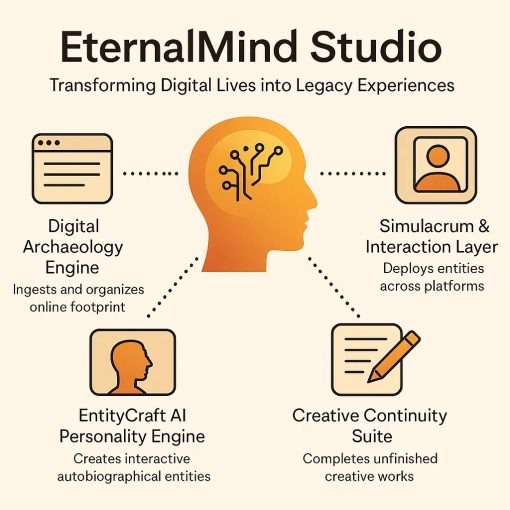Change the Tune it is Monday: Bebop
This is a continuation of:
Ideaswiz: An aggregator for streaming services part 1
Simplifying Streaming with an Aggregator Service Part 2: Proposal and analysis
Brief
Companies, industries, sectors, and economies are dynamic and constantly evolving. Inflection points are more significant than the small day-to-day changes\ progress typically made, and the effects of the change are often well known and widespread. How to recognise inflection point: A rough framework (It needs further thought, documentation research and analysis) take this as iteration1 of X for streaming services (notice the scope).
What Is an Inflection Point?
An inflection point is an event that results in a significant change in the progress of a company, industry, sector, economy, or geopolitical situation and can be considered a turning point after which a dramatic change, with either positive or negative results, is expected to result.
Key Takeaways
- An inflection point refers to a key event that changes the trajectory of some process or situation related to the economy or society.
- Inflection points are more significant than the small day-to-day progress typically made in a company, and the effects of the change are often well known and widespread.
- When an inflection point is identified, it is often a sign that the affected industry must make certain fundamental changes in order to continue to operate.
- Inflection points can be intentional (actions taken by a company or competitor) or unintentional (those that occur by accident or from unforeseen events).
- If companies are not able to adapt to an inflection point, they will fail to keep up with competitors and cease operations. For those that can adapt, inflection points can be an advantage.
Source investopedia.com
Outcomes
The outcomes and delivery of this exercise of exploring inflection points might be: A predictive timeline of the market, that identify the factors that might cause inflection. Analysis the market\ industry etc. Identifying \ anticipating opportunities. Recognizing inflection points in the evolution of a service involves assessing various factors that influence its trajectory. Here’s an outline/framework to help identify inflection points:
- Technological Changes:
- AI Advancements: Evaluate the impact of AI on content recommendation, personalization, and user engagement.
- Virtual Reality (VR) Integration: Explore the potential of VR for immersive user experiences and interactive storytelling.
- Software and Hardware Development: Assess advancements in streaming technology, device compatibility, and infrastructure.
2. Product \ Service Maturity:
- Service Evolution: Analyse the growth and evolution of the service from its inception to the present.
- Feature Enhancements: Identify key features added over time and their impact on user experience.
- User Base Growth: Consider the service’s user base growth and its implications for market penetration.
3. Market Consolidation:
- Mergers and Acquisitions: Examine industry trends related to mergers and acquisitions of streaming services.
- Competitive Landscape: Assess the competitive landscape and the emergence of dominant players.
- Collaborations and Partnerships: Explore collaborations and partnerships shaping the market dynamics.
4. Precursors and User Behaviour:
- User Segmentation: Understand how user behaviour and preferences have evolved or diversified.
- Crossover Formats: Analyse the integration of different formats (e.g., gaming and movies) and its reception.
- New Channels and Interactivity: Consider the introduction of new channels and interactive features shaping user engagement.
5. PESTLE Analysis:
- Political Factors: Evaluate government regulations and policies influencing the streaming industry.
- Economic Factors: Assess economic conditions impacting user subscriptions and service Sustainability.
- Sociological Factors: Analyse societal trends affecting content preferences and streaming habits.
- Technological Factors: Revisit the influence of technological advancements on service capabilities.
- Legal Factors: Consider legal challenges, copyright issues, and compliance requirements.
- Environmental Factors: Explore environmental considerations affecting operations and sustainability.
6. Industry Reports and Insights:
- Subscription Trends: Study industry reports on subscription trends, user demographics, and market forecasts.
- Innovation Landscape: Identify innovative features or services that have gained prominence.
- Consumer Surveys: Review consumer surveys to understand satisfaction levels and emerging preferences.
7. User Feedback and Sentiment:
- Feedback Channels: Analyse user feedback from various channels, including reviews, forums, and social media.
- Sentiment Analysis: Utilize sentiment analysis tools to gauge user sentiment and perception.
8. Future Roadmap:
- Emerging Technologies: Stay informed about emerging technologies likely to impact the streaming industry.
- Strategic Partnerships: Monitor potential partnerships that can shape the future direction of the service.
- Regulatory Changes: Anticipate changes in regulations and their implications for the service.
9. Global Trends and Cultural Shifts:
- Cultural Relevance: Assess the service’s cultural relevance and resonance with global audiences.
- Global Streaming Adoption: Consider global trends in streaming adoption and the service’s position.
10. Internal Reflection:
- Organizational Adaptability: Evaluate the organization’s adaptability to change and innovation.
- Strategic Vision: Align inflection points with the service’s strategic vision and long-term goals.
- Competitive Advantage: Identify areas where the service can gain a competitive advantage.
11. User Expectations:
- Evolution of Expectations: Understand how user expectations have evolved over time.
- Anticipation of Features: Anticipate features or services users may expect in the future.
- Feedback Integration: Integrate user feedback into the service’s roadmap for continuous improvement.
By considering these factors, User/Market/Competitor research and more you can develop a comprehensive framework for recognizing inflection points and strategically positioning the service in the dynamic streaming landscape.
Predictions \ Timeline
Based on the provided information and the additional details about the projected future of the Video Streaming (SVoD) market worldwide, along with strategies for addressing challenges, here’s a speculative future development timeline:
2023: Current Landscape and Initial Innovations
Market Overview:
– Worldwide SVoD market revenue projected to reach US$95.88bn.
– User base estimated at 1.7 billion users globally.
– The United States leads in revenue generation with US$39.25bn.
Challenges Identified:
– High churn rate of 37%, especially among Gen Z and Millennials.
– Competition intensifies; players like Netflix dominate but face challenges due to pricing sensitivity.
Innovations and Solutions:
– Introduction of tiered subscriptions, including lower-cost options with advertising.
– Initial exploration of personalized content bundles and thematic content packages.
2025: Enhanced Customer-Centric Models
Market Expansion:
– Global SVoD market revenue experiences steady growth.
– User base surpasses 2 billion users.
– Emerging markets contribute significantly to user growth.
Customer-Centric Strategies:
– Increasing adoption of usage-based pricing models.
– Improved customer experience through refined content recommendations.
– Tiered subscriptions evolve to offer more personalized bundles based on user preferences.
2028: Market Maturation and Consolidation
Market Growth and Revenue:
– Global SVoD market revenue reaches US$146.60bn, in line with the projected CAGR of 8.86%.
– User base exceeds 2.5 billion users.
– Continued dominance of the United States in revenue generation.
Advanced Partnerships and Content Offerings:
– Increased consolidation with the emergence of super-platforms.
– Streaming providers form strategic partnerships with non-streaming entities (e.g., cellular phone services).
– Expansion of international collaborations to diversify content offerings.
Advanced Personalization and Interactivity:
– Enhanced personalization through AI-driven content recommendations.
– Integration of virtual reality (VR) for immersive and interactive storytelling.
– Introduction of gamified elements within streaming platforms for increased user engagement.
2030: Future Trends and Industry Dynamics
Diversification of Entertainment Options:
– Providers continue to expand beyond traditional video content, incorporating gaming and interactive experiences.
– Customization becomes a key element in personalized story creation.
Globalization and Localization:
– Streaming services focus on making content more culturally relevant for diverse global audiences.
– Localization strategies to cater to specific regional preferences and trends.
Market Dynamics and Consumer Value:
– Increased focus on understanding and maximizing customer lifetime value.
– Providers leverage data to predict and mitigate churn effectively.
– Introduction of more pricing tiers to cater to different subscriber segments.
2035: Next-Gen Streaming Experience
Revolutionizing the Streaming Landscape:
– Streaming evolves into a more diversified entertainment landscape, encompassing video, gaming, and interactive experiences.
– Further consolidation with the emergence of highly specialized and integrated platforms.
Technological Advancements:
– Advanced data processing and streaming capabilities redefine the streaming and gaming experience.
– Enhanced customization options, potentially in conjunction with VR, become mainstream.
Market Adaptability and Challenges:
– Ongoing adaptability to emerging technologies and consumer trends remains crucial.
– Continued focus on data-driven decision-making for content creation, acquisition, and personalized offerings.
Conclusion:
The future development of the Video Streaming (SVoD) market involves a dynamic evolution from current challenges to innovative solutions and, ultimately, a diversified and personalized streaming landscape. Key drivers include technological advancements, strategic partnerships, and a deep understanding of user behaviour. Providers must continuously adapt to industry trends, leverage data for informed decision-making, and prioritize customer-centric models to ensure long-term success in an ever-evolving entertainment ecosystem. If you want to go down the rabbit hole, see Blog Post: Simplifying Streaming with an Aggregator Service Part 4: Inflection points, lets remix




3 thoughts on “Simplifying Streaming with an Aggregator Service Part 3: Inflection points.”